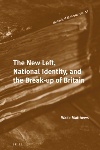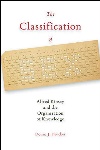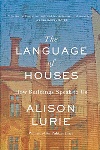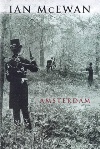Emily Bowles, doctoral researcher in Victorian literature, University of York, is reading Lucinda Hawksley’s Charles Dickens’ Favorite Daughter: The Life, Loves, and Art of Katey Dickens Perugini (Rowman & Littlefield, 2013). “Of all Dickens’ children, Katey was the most like him. She also had a fascinating life: two tempestuous marriages, modelling for John Everett Millais, and forging her own career as a successful painter, with her work exhibited regularly at the Royal Academy. This biography seeks to give her her own place in history, and is a thoughtful consideration of an overlooked artist.”

Peter Paul Catterall, reader in history, University of Westminster, is reading Wade Matthews’ The New Left, National Identity, and the Break-up of Britain (Brill, 2013). “This is more a collective biography than simply an analysis of how New Left thinkers reimagined Britain. In the process, it perhaps underplays the New Left’s role – through shifting discussion from class towards wider social and cultural relations – in remaking Britain into a more diverse and inclusive society since the 1960s.”

Robin C. Henry, associate professor of history, Wichita State University, is reading Donna Drucker’s The Classification of Sex: Alfred Kinsey and the Organization of Knowledge (University of Pittsburgh Press, 2014). “In this insightful examination, Drucker reveals the Kinsey we don’t know, the entomologist. As Kinsey’s research shifts from bugs to people, Drucker shows that his early research subject – the gall wasp – and his taxonomist skills prepared him for developing his unique subject history and classification system that served as the foundation for his major academic works on human sexuality.”

Judie Newman, professor of American and Canadian studies, University of Nottingham, is reading Alison Lurie’s The Language of Houses: How Buildings Speak to Us (Delphinium, 2014). “Why paint operating theatres green? Which church has a drive-through McDonald’s? What does the spacing of your furniture tell your guests about you, or the architecture of your place of worship about the character of your god? Is the White House innocent? And why are the arts at the opposite end of the campus from the sciences? For the answers, and a host of witty and perceptive observations, read on.”

Peter J. Smith, reader in Renaissance literature, Nottingham Trent University, has just finished Ian McEwan’s Amsterdam (Jonathan Cape, 1998). “This darkly comic morality tale about the perils of hubris begins at the wake of Molly Lane, whose past lovers include the vain composer Clive and the ruthlessly self-promoting newspaper editor Vernon. As the former struggles to complete his symphony and the latter to expose the hypocrisies of the cross-dressing foreign secretary, their suicide pact is triggered, almost casually. McEwan’s storytelling is poised and controlled, even as the plot becomes comically far-fetched.”
Register to continue
Why register?
- Registration is free and only takes a moment
- Once registered, you can read 3 articles a month
- Sign up for our newsletter
Subscribe
Or subscribe for unlimited access to:
- Unlimited access to news, views, insights & reviews
- Digital editions
- Digital access to THE’s university and college rankings analysis
Already registered or a current subscriber?

